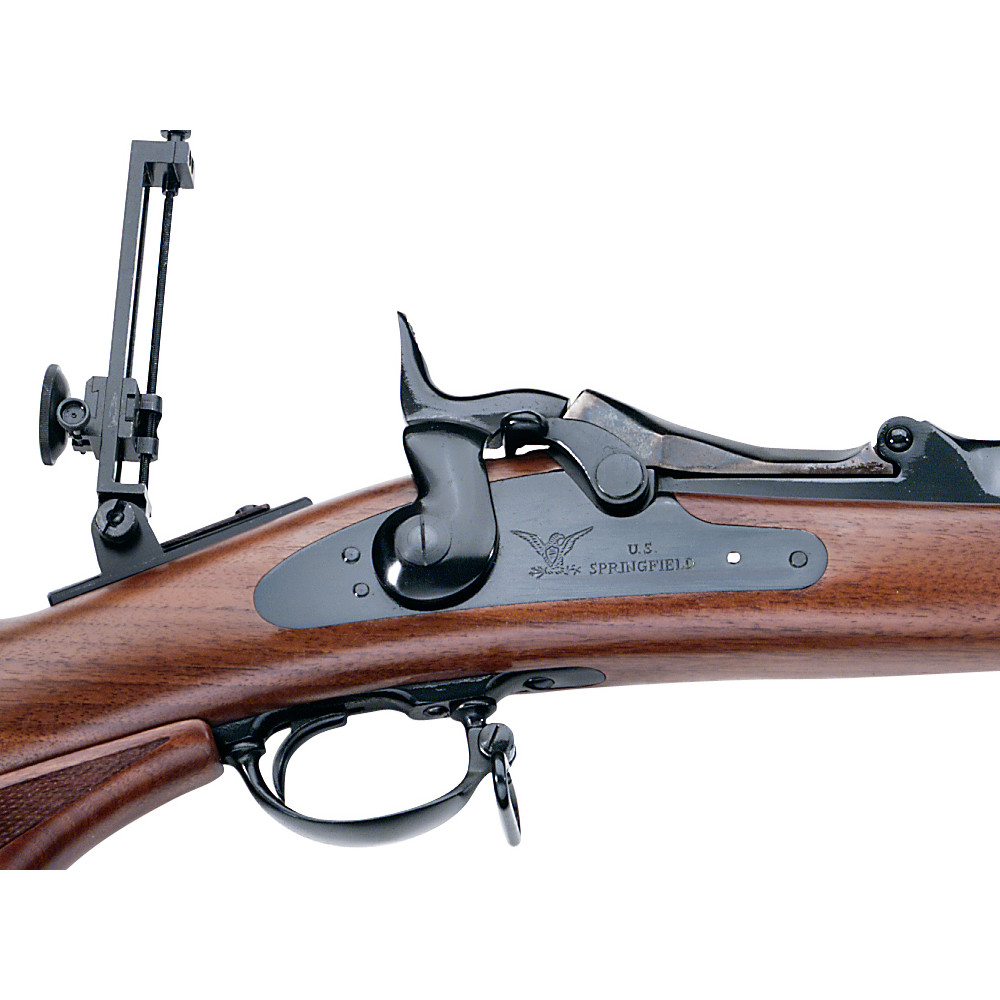

- #1873 springfield trapdoor with early 1868 hammer serial number
- #1873 springfield trapdoor with early 1868 hammer full
The interior edge of the cam latch has a “66” The Cam Latch retains strong remnants of its original blue finish. Second Type with the ground and polished rivet.
#1873 springfield trapdoor with early 1868 hammer serial number
Of the original oil hardened finish on the bottom, protected sides as well onīlocks did not appear until around serial number 84,000. Receiver meant there was no longer a need for a large expansion space within Unclear, but it may be that the increase in the size of the gas ports on the Official reason for the change from the high arch to the reduced arch is Afterward serial number 70,000, the breech Until around serial number 70,000 and has the high arch. The Second Type was introduced around serial number 30,000 and was used Of its original blued finish and both bands remain solidly on the stock.Īnd rare Second Type that is crisply marked “MODEL/1873/ eagle head/crossed The sling swivel is the correct split shank Original blue finish with the balance exhibiting a pewter patina. The Band, swivel and swivel screw retain considerable With one that had both a sling and stacking swivel. Very rare Model 1873 Rifle Upper Barrel Band with the smaller “U” stamp andīoss for only the sling swivels, which would be eliminated the next year, 1875, Spring exhibits a generally pewter patina. The Band is correctly marked with the serif “U” stamp and it retainsĬonsiderable original blued finish with areas of plum and pewter patina on the Model 1873 Lower Rifle Band with rounded top. The leaf retains the majority of its original blued finish as does the The leaf is marked with gradations up toġ,100 yards and correctly does not have the “R” rifle stamp, which does not

The base retains considerable original bluedįinish and is still secured by its original slotless screws. With gradations on the right side from 100 to 400 yards. Model 1873 was an improved long-range rear sight developed at SpringfieldĪrmory and was designed to replace the long-range rear sight used on the Modelġ868 Rifle.

The front sight exhibits a mixed plum andĬondition Model 1873 Rifle Rear Sight. Which would replace the one-piece type around serial number 96,500. Steel as opposed to the front sight blade attached to the base with the pin, Type that is a single, one-piece type that was milled from a single piece of The correct single-slot type and is unmarred and it retains the majority of itsīrazed to the barrel and it generally exhibits a mixed plum and pewter It has no letter inspection stamp as this was not done at Springfield untilīore of the rifle is in antique fine condition with very strong rifling and frostingīreech Plug and Tang both retain generous traces of the original oil Line that aligns with the corresponding line on the front of the receiver, but The right, rear of the barrel has a witness Pre-serial number 42,000 barrels are very rare. Viewed stamp were not used until approximately serial number 42,000. Were not “P” marked until around serial number 66,000, and the eagle and “V” Model 1873 Rifles, although proof tested, The left, rear side and top of the barrel are correctly unmarked. Its original blued finish with a slight plum patina in areas on the top,Ĭorrect flat tenon on the upper right, rear of the barrel, which was changed toĪ rounded tenon around serial number 92,000. The barrel still retains the vast majority of Long with a 0.730” barrel diameter at the muzzle. Serial number production in 1874 started atĢ2,397 Model 1873 rifles were manufactured in 1874, with the balance being
#1873 springfield trapdoor with early 1868 hammer full
45-70 caliber that was made in early 1847, which is the first full year ofģ1099, which places the date of manufacture of the receiver to late 1874. Condition and very scarce Springfield Armory Model 1873 Trapdoor Rifle in


 0 kommentar(er)
0 kommentar(er)
